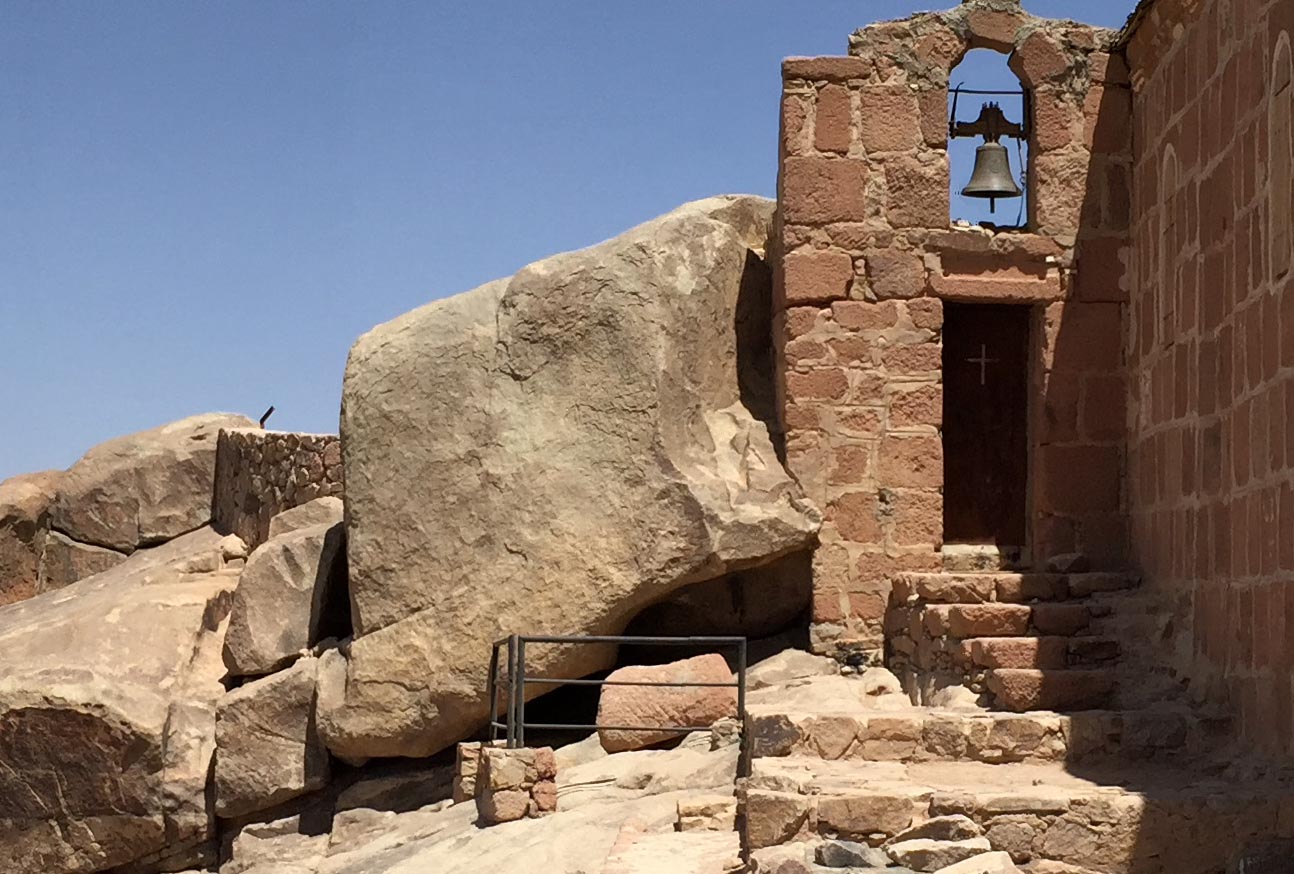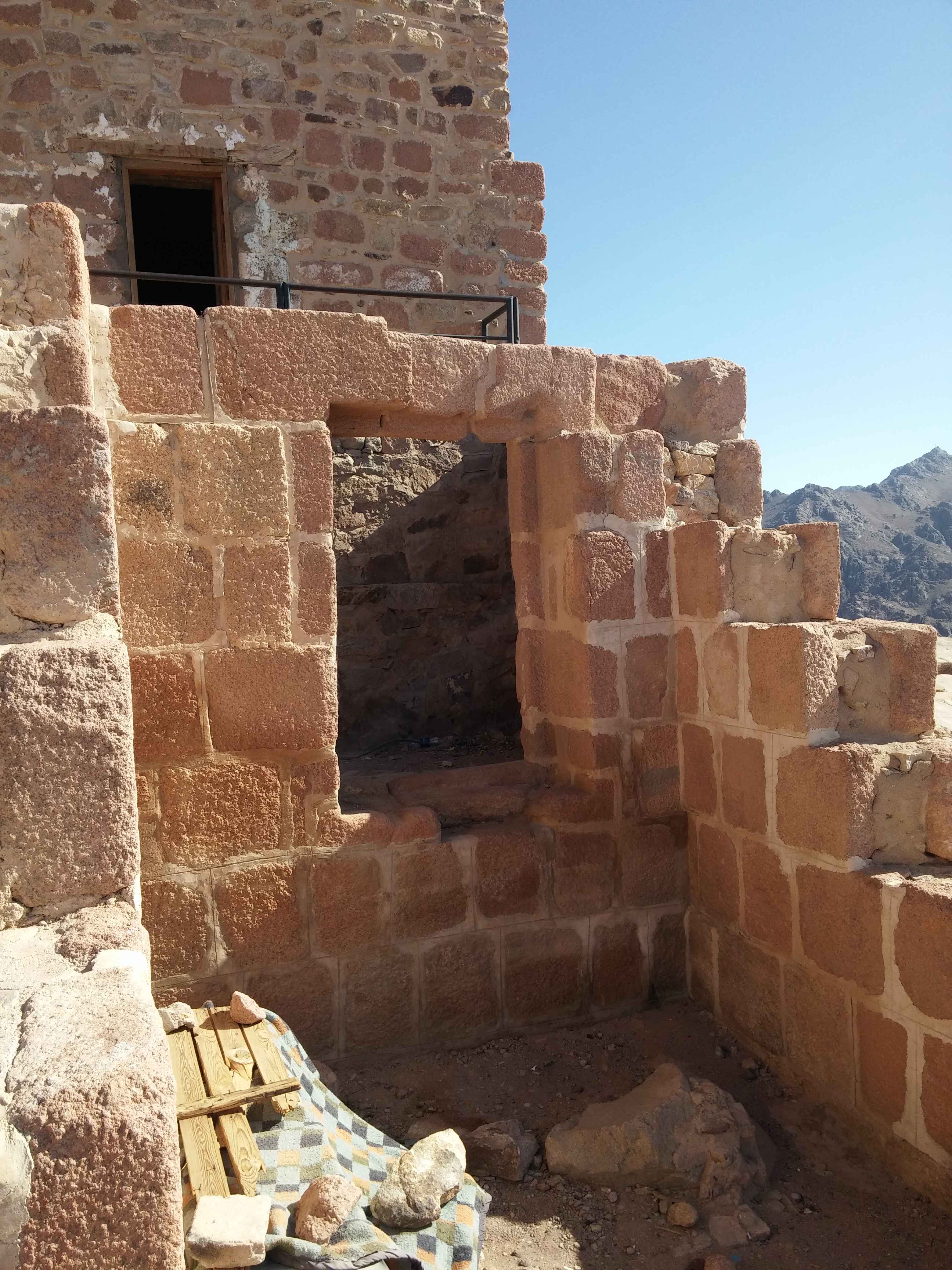THE HOLY SUMMIT

The Holy Summit of Sinai, also known as Jebel Mousa, is the place where Moses received the Law from God. Here are to be found the Chapel of God in the Highest, surrounded by the ruins of the larger Justinian basilica, and in addition, the Rock of Moses, and a mosque. The peak is at an altitude of 2,285 meters, and can be reached from the monastery by two different routes. The older is the Steps of Repentance, consisting of some 3,750 steps that ascend to the very summit, constructed in the 6th century. In the middle of the 19th century, Abbas Pasha I created the alternate Camel Trail, a more circuitous and more gradual ascent, that coincides with the Steps of Repentance for the last ascent of 750 steps.
As a rule, visitors ascend the Camel Trail in the early hours of the morning, to witness the sunrise from the peak of Sinai. They then have a choice of descending the same way, or taking the older and more scenic Steps of Repentance.
The Caves of Moses

There are two caves at the peak of Sinai associated with the Prophet Moses. The first one is located to the south of the present chapel, and is associated with Moses’ sojourn at the peak when he fasted for forty days and forty nights. It is reached by a small staircase. The door faces east, and the cave extends about two meters. At its opening, are to be found inscriptions from the first Christian millennium, in both Greek and Armenian. The second cave is actually a cleft in the rock, to the north side of the present chapel. This is associated with the place where Moses was hidden by God and from where he behelf the glory of God. “And it shall come to pass, while my glory passeth by, that I will put thee in a cliff of the rock, and will cover thee with my hand while I pass by” (Exodus 33:22).
Justinian’s Basilica
In the 4thcentury, the Righteous Julian of the Euphrates built a chapel at the peak of Sinai. This was described by Egeria, who came to Sinai about the year 380. It is also mentioned by Antoninus, who came to Sinai in the early 6th century. It was later in that same century that the Emperor Justinian ordered the construction of a three-aisled basilica at the peak of Sinai. Recent excavations have shown that the basilica measured 25 x 13 meters. The aisles were separated from the nave not by columns, but by square pillars. The basilica was supported by extensive supporting structures, and the complex included a cistern and other quarters. The stones were hewn and carried up from the basin below the peak. In time, because of the instability of the supporting structures, the basilica collapsed, some time before the 12th century.

The present Chapel
The present Chapel of the Holy Trinity rests at the eastern end of the original complex. Using material from the older structures, it was completed in 1935, and the inside walls decorated with paintings in 1937. It rests at the site of the original 4thcentury chapel, which formed the eastern end of the 6th century three-aisled basilica. The Divine Liturgy is celebrated there quite frequently, and most often by visiting Orthodox clergy and pilgrims. The area outside the holy chapel is being excavated, and there are plans to make a limited restoration of the site, to allow a visitor to understand the original extent of the sixth century basilica.
The Mosque
Within the complex of buildings at the summit of Sinai is a mosque. It is mentioned in 11th century descriptions of the site. It was constructed along the outer perimeter of the sixth century basilica, using stones from the church. It is a simple, square building. Beneath the mosque is a cave, whose walls are covered with ancient inscriptions.




